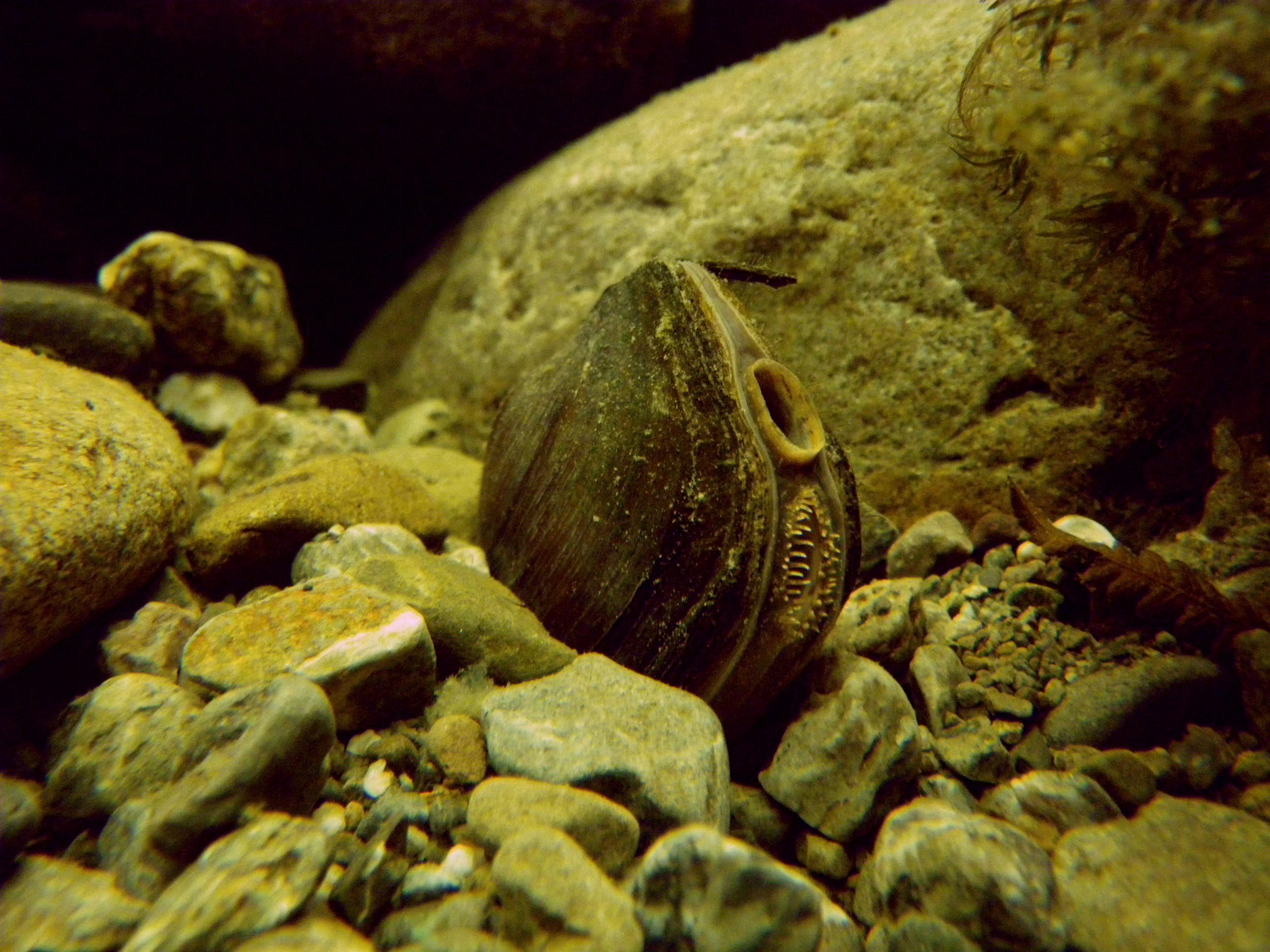A life less ordinary for native mussels
This summer, keen mollusc-o-philes may be interested in taking advantage of the warmer weather, and getting out and meeting some lesser-known local bivalves.
While the kākahi or freshwater mussel may look humble, it has some pretty interesting life history traits. While most mussels expel eggs and sperm for external fertilisation in the water, a mother kākahi keeps her eggs inside her shell to develop.
She takes in sperm through her inhalant siphon and her eggs (thus fertilised), are then held internally, in brood chambers until they develop into larvae called glochidia. These glochidia (about the size of a grain of sand) are then ‘sneezed’ out of their mother’s exhalent siphon, whereupon they latch onto a passing native fish’s gills to spend the next stage of their life cycle as parasites! A developmental strategy like this provides a useful means of dispersal for kākahi—allowing population growth, while avoiding overcrowding.
Kākahi are amazingly long-lived—age estimations have included individuals over 50 years old. The future for this species is uncertain, as juveniles currently seem to be either absent or very rare in many populations studied. Like most freshwater mussels, kākahi are thought to be very sensitive to ammonia, which enters waterways through municipal wastewater discharges and through the inputs of nitrogenous wastes from animals. Hosts for kākahi larvae are also a lot harder to find, as so many of our indigenous freshwater fish species are declining.
Populations are not common but kākahi can still be found in some slow-flowing lakes and rivers throughout the country. Ask your local DOC or Regional Council office if there are any populations in your area, and if so, get out and take the kids wading!

